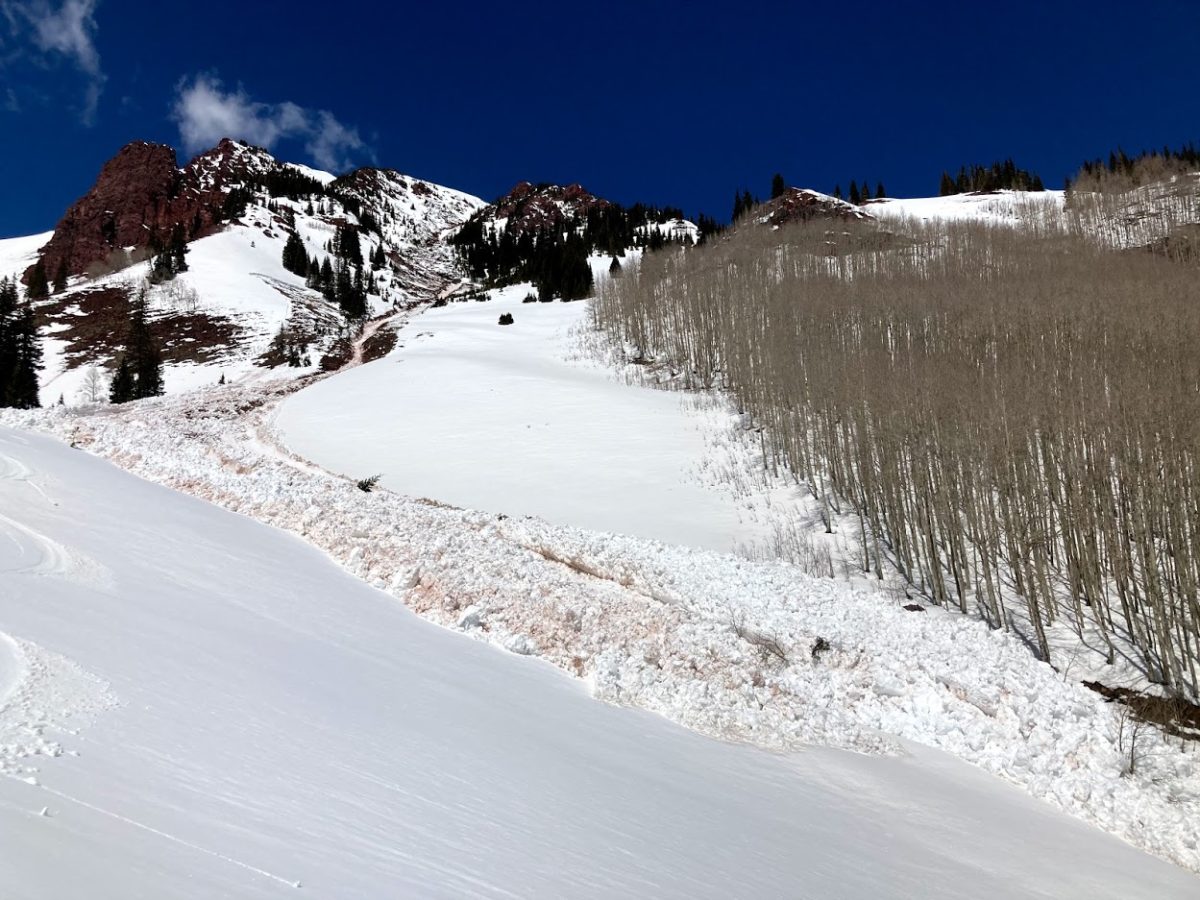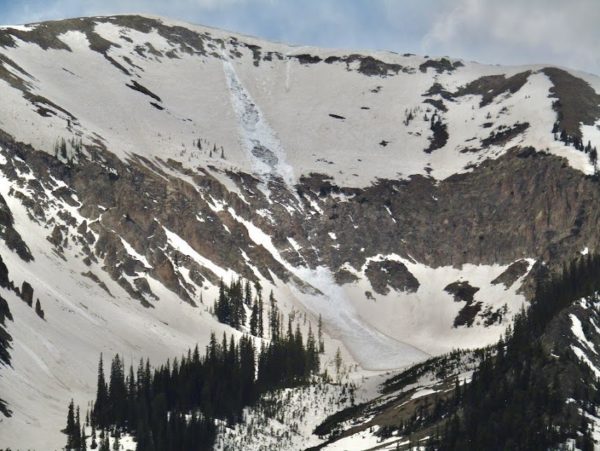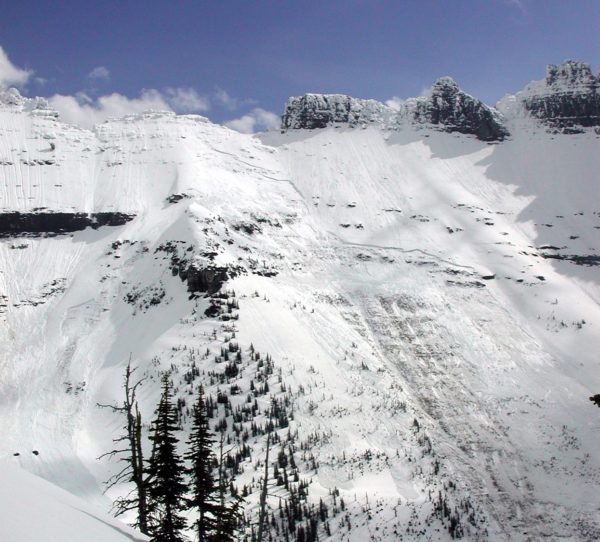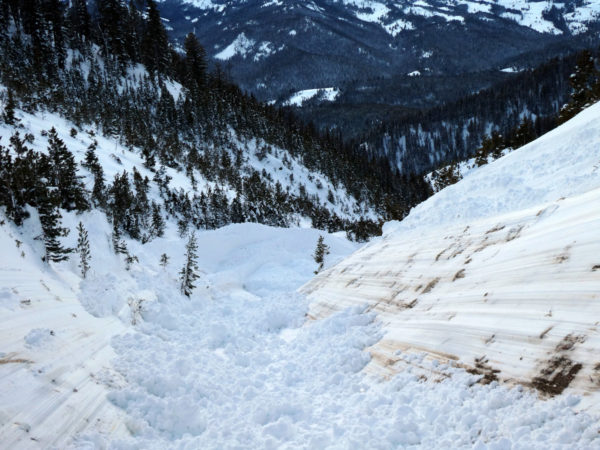An avalanche that breaks in or entrains wet snow.
Wet snow is at its melting point, characterized by some amount of liquid water existing between snow grains. In certain situations increased liquid water content causes the snowpack to lose strength and avalanche. These wet avalanches can release from a single point (Wet Loose) or as a cohesive slab (Wet Slab). They can occur from rain on snow, strong solar input, or warm temperatures. Although wet snow avalanches are typically slower than dry snow avalanches, they can move very quickly in steep and constrained terrain and they produce very dense and destructive debris. They are commonly recognized by the presence of striations on the bed surface, debris levees along the track, and snowballs in the debris. Wet avalanches account for fewer fatalities than dry snow avalanches. Accidents are often attributed to misjudging the timing of natural avalanches or underestimating the danger of getting caught in slow-moving wet snow debris.




